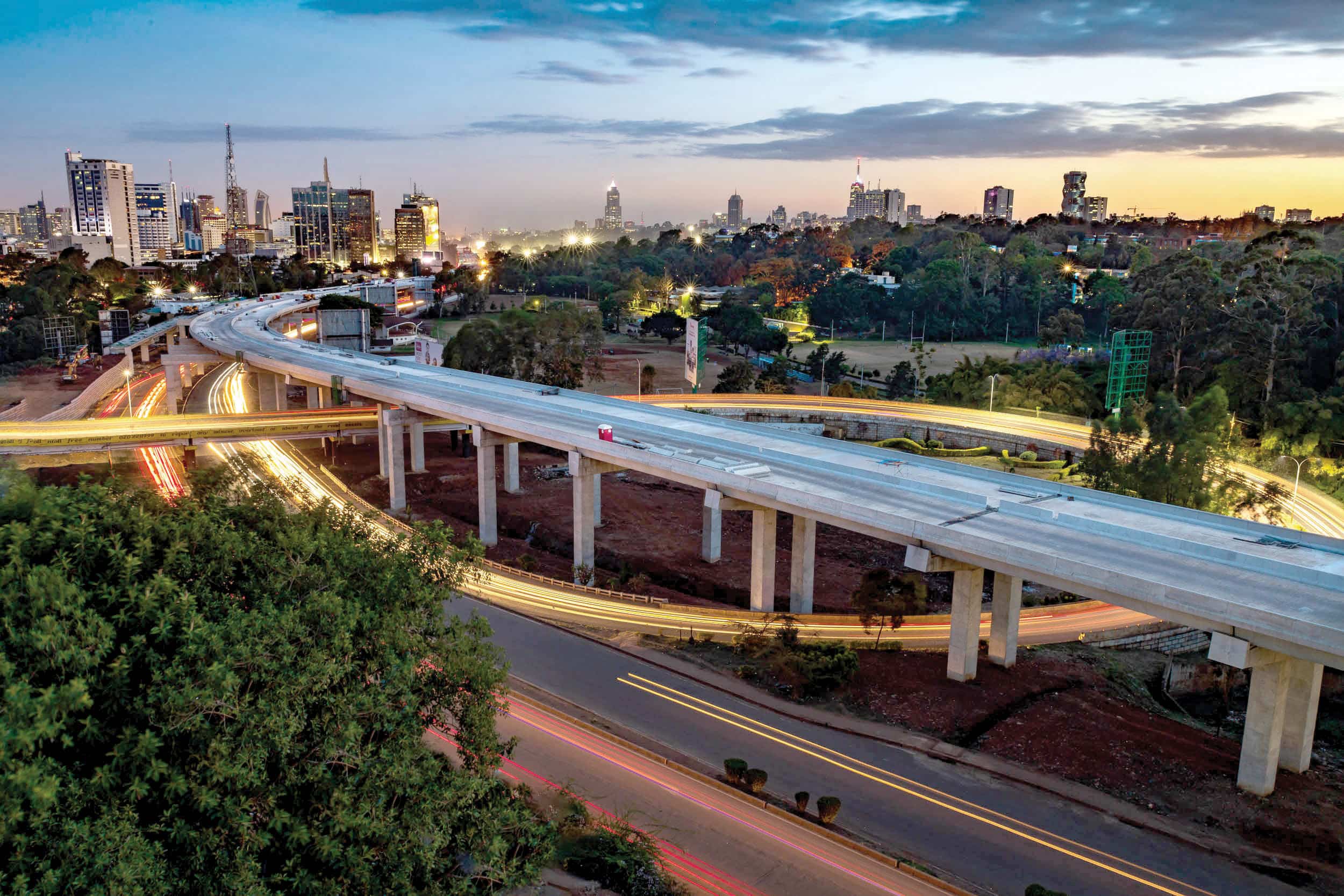“Changing the economic future of Kenya demands making growth and the creation of opportunities our number one priority.” H.E. William Ruto, President of the Republic of Kenya
As the fourth largest sub-Saharan economy and the third fastest-growing GDP in the region, Kenya has positioned itself as a major economic power in sub-Saharan Africa. Over recent years, Kenya has adapted its economy to become a manufacturing, logistics, and technology hub.
This diversification forms a solid platform from which the government can generate cross-border economic growth over the coming years. As a land of endless opportunities, one of the main advantages Kenya enjoys is its strategic location in East Africa, serving as a gateway to the African market with a population of over 1.4 billion people. The African Continental Free Trade Agreement (AfCFTA) ensures that Kenya is now better positioned than ever to take advantage of the vast opportunities that the African market has to offer.
In addition, East Africa is also the fastest-growing region on the continent. “With DRC joining the East African community, the market is sizable and new opportunities arise. Kenya may not prosper and grow further by just sitting in Kenya, so many companies are now looking into the neighboring markets,” says Manoj Shah, Owner of Osho Chemical Industries.
Loading...
With the recent election of His Excellency President William Ruto, the nation is marked by a transformative period with new milestones to push forward Kenya’s development. Although the Kenya 2030 Vision was enacted by the previous government, it will be enhanced with the new presidency’s measures to create an even stronger, industrializing, middle-income nation. President Ruto is keen on attracting Foreign Direct Investment by enacting business-friendly policies. As part of his manifesto, Kenya Kwanza Plan, the President focuses on five pillars of the economy including agriculture, Micro Small, and Medium Enterprises (MSME), affordable housing, healthcare, and the digital economy. “We intend to give comfort to investors through credible and effective institutions and reactivate our dormant Central Depository investor accounts,” the President confirms.
Kenya boasts a dynamic and thriving private sector, driving economic growth and employment. “Kenya is privileged to be a private sector-led economy. The Kenya Private Sector Alliance (KEPSA) plays a big role to ensure the interlock between the private sector, government, and development partners,” explains Carole Kariuki, CEO of KEPSA.
The country’s Vision 2030 emphasizes six priority sectors important for the nation’s growth, one of which is manufacturing. “We have agreed that we need to increase the contribution of manufacturing to GDP from 7.5% to 20% by 2030. That is a threefold increase in growth which is very ambitious,” states Anthony G. Mwangi, CEO of the Kenya Association of Manufacturers.
As a country where only a small portion of the population earns enough to afford a mortgage, Kenya is also working to curb the issue of housing deficits. “We want to build fantastic world-class housing estates at affordable pricing. If you look at Vision 2030, current and previous governments, have been working on infrastructure. It means that people can live a bit farther and get quality housing,” notes Andrew Muthee, CEO of AMG Realtors. Given that there is a growing trend for urbanization and a demand for housing, there’s a vast potential for the real estate industry to thrive in the Kenyan market. “We have a good relationship with Kenya. We know that the country is the best place for investment. It is the economic heart of Africa,” notes Gong Yuxian, General Manager of Avic International Real Estate Kenya.
Sectors poised for exponential growth and investment opportunities are aligned with President
Ruto’s five pillars, where his manifesto priorities agriculture, micro, small and medium enterprises, housing and settlement, healthcare, as well as the digital superhighway and the creative economy, which include software engineering and artificial intelligence.
In Kenya, ICT has been established as the key to growth. As such, President Ruto plans to lay 100,000 kilometers of internet fiber nationwide over five years to ensure Kenya stays on this upward trajectory. Through investments of US $400 million, nurturing ICT talent, supporting education in technology fields, and lowering the cost of the internet, Kenya is poised to be Africa’s new digital hub and a hotspot for ICT. Meanwhile, its tech ecosystem offers an attractive space for entrepreneurs and investors.
President Ruto has stated that one of his government’s central concerns will be climate change and renewable energy, areas in which Africa has the potential and opportunity to lead the world. Kenya’s development is supported by its progress in its energy sector which has a dual objective of providing affordable and dependable power to all and driving Kenya’s shift towards a low-carbon economy.
“We are looking at the energy transition for the future because our company’s target is to reach full decarbonization by 2050. Based on this target, ENI Kenya and Kenya have found a way to work together because Kenya also plans to have a 32% reduction of its greenhouse gas emission by 2030,” notes Enrico Tavolini, Managing Director of ENI Kenya. As the country continues its journey towards becoming a middle-income nation, its boundless potential and endless possibilities wait to be tapped by potential investors.
Loading...
